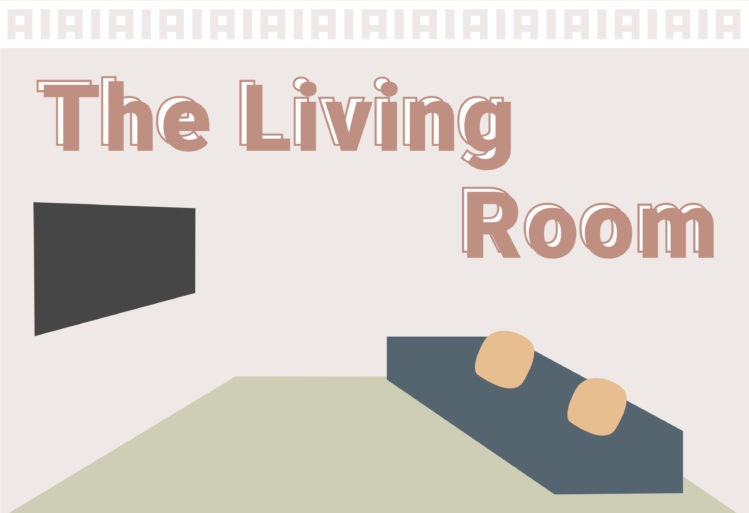
The Living Room
–
February 4 – May 2022
Organized by Henry Heng Lu, with assistance from Hau Yu Wong
–
Current Gallery Hours:
Wednesday to Saturday, 12 PM – 6 PM*
*Subject to change as per COVID-19-related protocols. Face masks or face coverings are mandatory during your visit.
–
For Centre A’s first experiential project “The Living Room” in 2022, our gallery space will be transformed into a furnished living room space. Our visitors will have the opportunity to sit down in our makeshift living room to watch a series of curated films and videos.
By converting the gallery rooms into a (semi-)domestic space, we hope to demystify and challenge the oftentimes inaccessible, highly curatorial nature of a contemporary art gallery. Through this project, we hope to host a space in which visitors can reconnect with us and each other after almost two years of isolation.
There will be two series of films programmed as part of The Living Room project: The first one, addressing reconnection, lineage, and exile, will take place from February to March 2022, and the second series will run from April to May 2022.
The second series is built upon an examination of Canada’s role in the Multicultural discourses in terms of inequality, intermediacy, and extraction. Bringing together an array of approaches, through documentary or futuristic lens, this program points to the making of a nationhood and its discontents from a sociopolitical perspective.
Special Program (April 27 – 30)
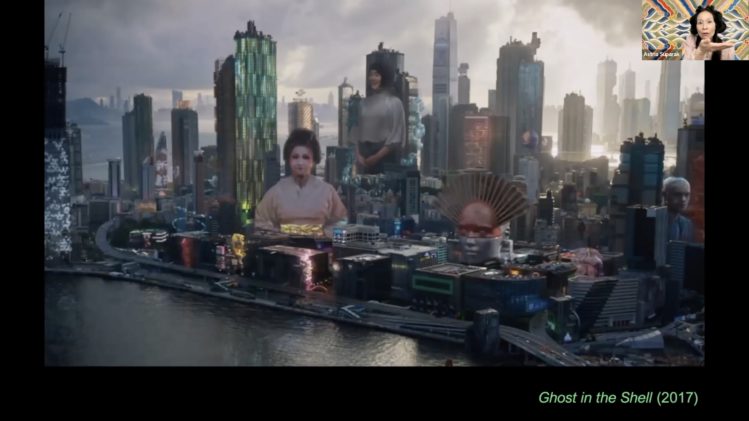
Astria Suparak – Asian futures, without Asians (2022), 60:04 minutes, colour
This live performance/lecture was commissioned by Centre A and took place online on Saturday, April 9, 2022. The recording of the lecture will be available for viewing at Centre A as part of The Living Room from Wednesday, April 27 to Saturday, April 30, 2022, during gallery hours (12 PM to 6 PM).
Asian futures, without Asians asks: “What does it mean when so many white filmmakers envision futures inflected by Asian culture, but devoid of actual Asian people?”
Part critical analysis, part reflective essay and sprinkled throughout with humour, justified anger, and informative morsels, this one-hour illustrated lecture examines nearly 60 years of North American science fiction cinema through the lens of Asian appropriation and whitewashing.
Using a wide interpretation of “Asian” to reflect current and historical geopolitical trends and self-definitions, this research-creation project examines how Asian cultures have been mixed and matched, contrasted against, and conflated with each other, often creating a fungible “Asianness” in futuristic sci-fi.
The quick-paced performance lecture is interspersed with images and clips from dozens of futuristic movies and TV shows, as Suparak delivers anecdotes, trivia, and historical documents from the histories of film, art, architecture, design, fashion, food, and martial arts. Suparak discusses the implications of not only borrowing heavily from Asian cultures, but decontextualizing and misrepresenting them, while excluding Asian contributors.
Astria Suparak is an artist, writer, and curator based in Oakland, California. Her cross-disciplinary projects address complex and thorny issues (like white supremacy, colonialism, and racial capitalism) made accessible through a popular culture lens (such as sci-fi movies, rock music, and sports). Straddling creative and scholarly work, the projects often take the form of publicly available tools, databases, and histories of subcultures and omitted perspectives.
Program II (April 1 – May 2022)
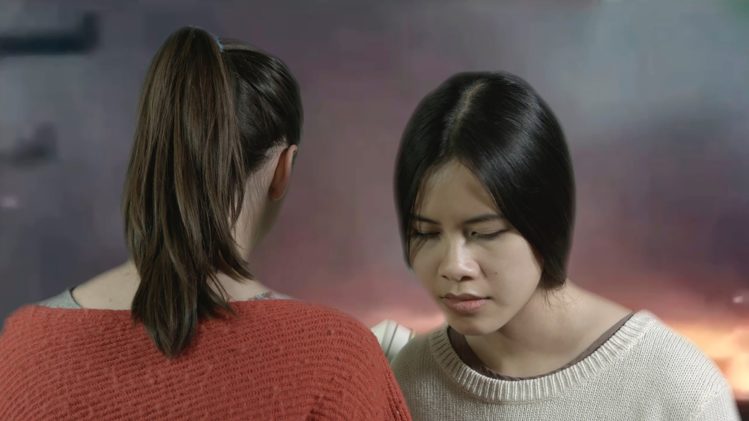
Skawennati – The Peacemaker Returns (2018), 18:39 minutes, colour
Skawennati makes art that addresses history, the future, and change from her perspective as an urban Mohawk woman and as a cyberpunk avatar. Her early adoption of cyberspace as both a location and a medium for her practice has led to groundbreaking projects such as CyberPowWow and the Skins workshops on Aboriginal Storytelling and Digital Media. She is best known for her machinimas—movies made in virtual environments—but also produces still images and sculpture.
The Peacemaker Returns takes place in the far future, when the entire Earth has become a confederation of countries who truly recognize that we share one planet; that one person’s religion, language, sexuality need not interfere with another’s; and that peace is not just the absence of war, it is the eradication of injustice as well. Now Earth has a new challenge, and Iotetshèn:’en, a young Mohawk woman, is travelling through space along with four other diplomats to a momentous rendezvous.
Just as every child in our society knows who Santa Claus is, every child in ancient Iroquoia knew who the PeaceMaker was. His name was Tekanawí:ta, and he brought peace, unity and respect to five warring nations –the Mohawk, the Onondaga, the Oneida, the Cayuga, and the Seneca. The Peacemaker Returns imagines how the ancestral Iroquois knowledge of peacemaking can be applied to all humans today, and to other worldly beings one day. It also imagines more peacemakers, some of whom might be women.
Richard Fung, John Greyson and Ali Kazimi – Rex vs. Singh (2009), 29:38 minutes, colour, English
Richard Fung is a Toronto-based videomaker and writer. His tapes, which explore the intersection of race, sexuality and representation, have been widely screened and collected internationally, and his essays on cultural policy and politics have been published in many journals and anthologies. Richard frequently programs film and video, and has served on the boards and committees of many organizations.
John Greyson is a Toronto film/video artist whose shorts, features and installations include: Fig Trees (2009, Best Documentary Teddy, Berlin FIlm Festival; Best Canadian Feature, Inside Out Festival); Proteus (2003, Best Film, Diversity Award, Barcelona Film Festival; Best Actor, Sithenghi Film Festival).
Ali Kazimi became the first Indo-Canadian to be honoured with the Governor General’s Award for Lifetime Achievement in Visual and Media Arts in 2019 for over three decades of ground-breaking work as a documentary and media artist whose work deals with race, social justice, migration, history and memory. His film Continuous Journey(2004), alongside his book, Undesirables: White Canada and the Komagata Maru (2011), have played a key role in shedding light on the forgotten histories of early South Asian immigration to Canada.
In 1915, two Sikh mill-workers, Dalip Singh and Naina Singh, were entrapped by undercover police in Vancouver and accused of sodomy. This experimental video stages scenes from their trial, told four times: first as a period drama, second as a documentary investigation of the case, third as a musical agit-prop, and fourth, as a deconstruction of the actual court transcript.
Jennifer Chan – Equality (2019), 15:00 minutes, colour
Jennifer Chan uses the internet as a source to make remix videos as social commentary on sex, love, desire, equality, wealth, and all kinds of mediated ideals that won’t deliver in real life. She has had solo presentations at Transmediale (Berlin), Images Festival (Toronto), Nightingale (Chicago) and Future Gallery (Berlin), and has shown at Moving Image (London), Trinity Square Video (Toronto), Interstate Projects (New York), LTD (Los Angeles), and XPO Gallery (Paris). Her work has been featured on Rhizome, Furtherfield, Sleek, Dazed, and LEAP. Chan was born in Ottawa, grew up in Hong Kong, and now lives in Toronto. Chan holds a MFA in Art Video from Syracuse University and an HBA in Communications, Culture, Information Technology.
Equality (2019) was a part of Jennifer Chan‘s solo exhibition The Blue Pill at Brandon’s AGSM (Art Gallery of Southwestern Manitoba). The installation uses a number of mediums, including video, object assemblage, webpages, sound and prints to “explore her frustrated relationship with radical politics, workplace mundanity, and equality.” Politics, marketing and buzzwords like ‘diversity’ are picked apart to confront subjugation and exploitation and the ways these realities have become simulated into something neat. (Source: AQNB)
Zacharias Kunuk – Angirattut (Coming Home) (2015), 90:00 minutes, color, Inuktitut only /no subtitles
Zacharias Kunuk is a renowned filmmaker whose dramatic feature films include Atanarjuat The Fast Runner, which won the Camera d’Or at the Cannes Film Festival in 2001, and The Journals of Knud Rasmussen, codirected with Norman Cohn, which opened the Toronto International Film Festival in 2006. Kunuk is the winner of a National Arts Award, the National Aboriginal Achievement Award and was named an Officer of the Order of Canada in 2005. Earlier this year, Atanarjuat was voted the Best Canadian Film of all times by Toronto International Film Festival survey.
After being relocated from their homeland 5 decades ago and dispersed throughout Nunavut, a group of elders return to Siugarjuk and embrace the restorative power of their homeland to heal personal loss. In doing so, they share their life history and oral history of an ancient way of life to help the next generation of Inuit meet the challenge of survival in the 21st century. Award-winning Igloolik filmmaker Zacharias Kunuk follows this homecoming voyage to celebrate his ancestors and their life on the land.
Lisa Steele + Kim Tomczak – The Afternoon Knows what the Morning Never Suspected (2017), 21:00 minutes, colour, English
Lisa Steele, born in Kansas City, Missouri in 1947, studied English Literature at the University of Missouri. She immigrated to Canada in 1968 and is now a Canadian citizen. Steele’s videotapes
have been extensively exhibited nationally and internationally, including: the Venice Biennale (1980), the Kunsthalle (Basel), the Museum of Modern Art (NYC), the National Gallery of Canada, the Institute of Contemporary Art (Boston), 49th Parallel Video Series, the Vancouver Art Gallery and the Long Beach Museum.
Since 1983, Steele has worked exclusively in collaboration with Kim Tomczak, producing videotapes, performances and photo/text works. Legal Memory (1992), their first feature-length work, has been shown in a number of film festivals since its release, including the Los Angeles Gay and Lesbian Festival, Festival Internazionale Cinema Giovani (Turin, Italy), and Toronto International Film Festival.
Kim Tomczak is a multidisciplinary artist primarily known for his work in performance, photography, video, and photo/text work. Since 1983, he has worked exclusively in collaboration with Lisa Steele. They have received numerous grants and awards, including the Bell Canada prize for excellence in Video Art, a Toronto Arts Award and in 2005, a Governor General’s Award for lifetime achievement in Visual & Media Arts.
The Afternoon Knows What the Morning Never Suspected reflects on Steele’s own history as a war resister who found refuge in Canada through a reading session in which two young women, both war refugees, share passages about the history of the Vietnam War and Canada’s role in the conflict as a war profiteer. (Source: Letterboxd)
In partnership with Vtape and the SFU David Lam Centre.

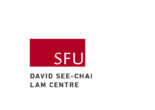
Presented as part of Capture Photography Festival 2022.

Program I (February – March 2022)
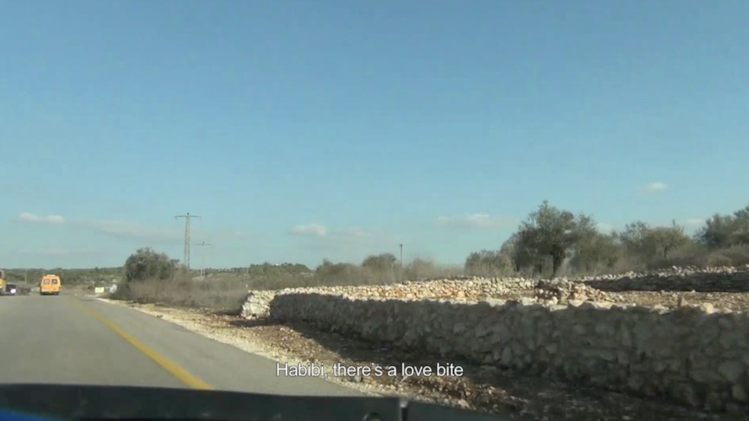
Ho Tam – The Yellow Pages (1994), 07:40 minutes, B&W tinted, English text, silent
Ho Tam was born in Hong Kong and educated in Toronto, Canada, and has worked in advertising firms and community psychiatric facilities before turning to art. He works in a diverse mix of disciplines including painting, video, print and public art and has exhibited in various cities across North America. His first video, The Yellow Pages, was commissioned by the public arts group Public Access for an installation/projection at Union Station in Toronto, 1994/95. Tam currently lives in New York City and is working on a few new projects, including a video on a famous Chinese movie star from the 40s.
Arranged alphabetically in 26 brief segments, The Yellow Pages explores the history of immigration and its implications within the North American social context. Adapted from a bookwork of the same title, images and text are interwoven to examine the Asian experience under the mass media and everyday life. In a playful and satirical manner, the video brings the audience to review our ongoing history, from the Chinese railroad labourers in Canada, the Japanese in W.W.II, the U.S. involvement in the Korean War, to the arrival of the “Boat People” and the 1997 Hong Kong Money Crisis.
Roy Dib – Mondial 2010 (2010), 19:17 minutes, colour, Arabic with English subtitles
Roy Dib is a visual artist and filmmaker that works and lives in Beirut, Lebanon. Dib received a master’s degree in Theatre and Performance Studies from the Lebanese University in Beirut, Lebanon, in 2004. His practice is rooted in film, video and video installation with a focus on the subjective constructs of space and how they put forth issues from the Middle East’s geopolitical context. In his work, territory, memory, and imagination come together with his experiences in Lebanon, creating new horizons for interaction with otherness.
Mondial 2010 centres on a Lebanese gay couple as they take a road trip to Ramallah. Dib uses video as an apparatus to transgress boundaries, making Mondial 2010 a travel film in a trajectory that doesn’t allow travel, starring two male lovers, in a setting where homosexuality is a punishable felony.
Cherie Valentina Stocken – The Weave (2006), 05:36 minutes, colour, English/Blackfoot
Cherie Valentina Stocken is from the Cree/Ojibway Nations. She is also English, French, and German. Stocken’s video/performance work deals with issues of cultural convergence and the individual identity. She has received her BFA from the University of British Columbia and has screened both nationally and internationally. Some venues include imagineNATIVE Film and Media Arts Festival (Toronto), Images Festival (Toronto), Dreamspeakers International Aboriginal Film and Television Festival (Edmonton) and NURTUREART Non Profit Inc. (New York).
This video/performance triptych addresses the issue of cultural convergences and the individual identity. A woman of mixed descent stands between both the English and Native cultures searching for a resolution to bring these two groups together. She carries with her, the struggles of both ancestral cultures. These nations’ behaviour negatively affects the young woman as she cries out with anguish. She is their future generation, dealing with the residue of colonialism. In time, the two ethnic groups learn to understand and respect one another. The girl learns to weave both cultures together while finding balance in herself. Her spirit can now rest.
Thirza Cuthand – Medicine Bundle (2020), 09:33 minutes, colour, English
Thirza Jean Cuthand was born in Regina, Saskatchewan, Canada, and grew up in Saskatoon. Since 1995 they have been making short experimental narrative videos and films about sexuality, madness, youth, love, and race, which have screened in festivals internationally, including the Tribeca Film Festival in New York City, Mix Brasil Festival of Sexual Diversity in São Paulo, Hot Docs in Toronto, ImagineNATIVE in Toronto, Frameline in San Francisco, Outfest in Los Angeles, and Oberhausen International Short Film Festival in Germany where their short Helpless Maiden Makes an “I” Statement won honourable mention. Their work has also been screened at galleries including the Mendel in Saskatoon, The National Gallery in Ottawa, and Urban Shaman in Winnipeg.
“Medicine Bundle is about a bundle that was used in my family to heal my Great Great Grandfather from a smallpox epidemic and a life-threatening wound from a gatling gun used against him during the Battle Of Cutknife Hill in 1885. The bundle was again used in 1918 when my Grandfather contracted the Spanish Flu as a baby. It was buried in an unmarked grave to protect it from grave robbers, but the spirit within the bundle has continued to protect our family from more modern psychological effects of colonization like depression. As I finished this video, a pandemic was raging over the globe, and I wondered if the bundle would continue to protect us now as it has in the past.”
Richard Fung – Nang by Nang (2018), 40:18 minutes, colour, English
Richard Fung is a Toronto-based videomaker and writer. His tapes, which explore the intersection of race, sexuality and representation, have been widely screened and collected internationally, and his essays on cultural policy and politics have been published in many journals and anthologies. Richard frequently programs film and video, and has served on the boards and committees of many organizations.
Nang has lived outside the box. Born in a Trinidadian village in 1934, she grew up poor, illegitimate, mixed-race and female, but she survived by defying convention. She left the first of five husbands when he cheated on her. With no formal training, she danced with choreographer Geoffrey Holder, who later won Tony Awards for The Wiz. In her twenties, she went to work in the Orinoco delta in Venezuela, and saved enough to buy a house. She started university in New York in her 40s. Stubbornness, resourcefulness, and resilience have allowed Nang to surmount life’s scars and tragedies. In this vivid portrait, filmmaker Richard Fung gets to know his previously unknown first cousin at her current home in New Mexico and on the road in Trinidad.
In partnership with Vtape and the SFU David Lam Centre.


Throughout the duration of the project, the space will be activated through various engaging public programs including but not limited to reading groups, movie nights, and a small, COVID-safe food event.
Artists and filmmakers, as well as programmers, are also invited to submit films, video work, and moving images to be considered for a screening during The Living Room. We will offer CARFAC-standard fees. Centre A strongly encourages artists, collectives, and other community members or organizations with diverse backgrounds and narratives to submit works for consideration.
Email us [email protected] for further submission details.
Accessibility: The gallery is wheelchair and walker accessible. If you have specific accessibility needs, please contact us at (604) 683-8326 or [email protected].
Centre A is situated on the unceded territories of the Musqueam, Squamish, and Tsleil-Waututh peoples. We honour, respect, and give thanks to our hosts.









